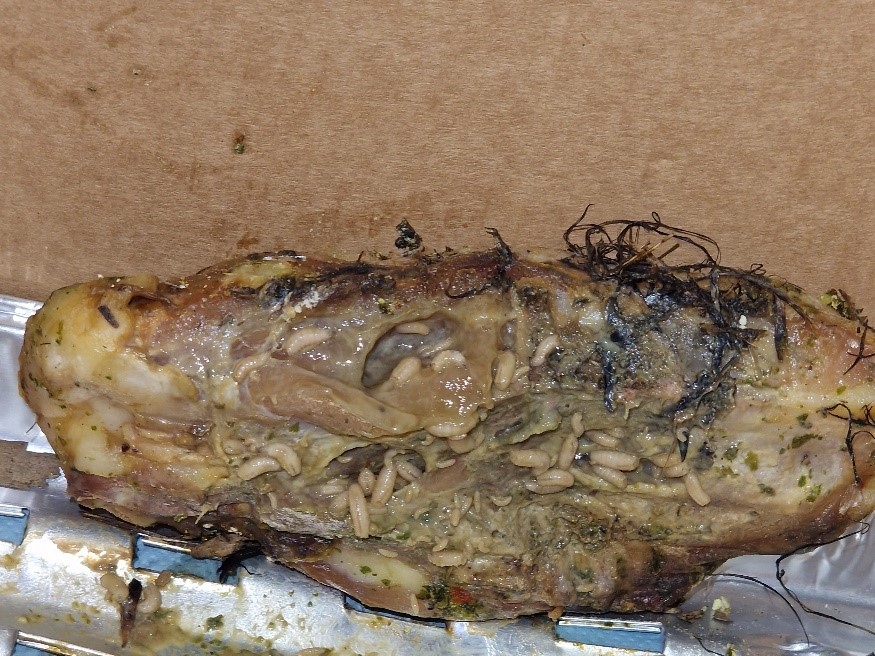Paper Authors and Title
Leon Smith (Technological University Dublin), John Power, “Can the casings of maggots or fly larvae reveal if a drug was present in the tissues the larvae fed on? A proof-of-concept study”
Abstract
At post-mortem investigations maggots are often found on or near dead bodies. Can drugs consumed by an individual prior to death be detected in these maggots? This is a question of great interest in forensic cases, especially if the body was moved and only fly detritus remains.
I designed a system that ensured blowflies were confined to an area, that a number of life cycles occurred (eggs to adult blowflies) and that potential contamination aspects between caffeine impregnated meat and emerging blowflies were addressed. The temperature in the fly development area was kept constant (15o Celsius) which ensured that factors affecting fly development were due to the caffeine consumed and not temperature variations.
Blowflies which fed on the caffeine impregnated meat were observed to have slower maturation times when compared to the control blowflies. In addition, the caffeine fed fly pupal casings were visually lighter in colour and smaller in size.
In looking at the toxicological and forensic aspects. Pupal casings, adult flies and fly faeces from the flies that fed on caffeine impregnated meat (Group A) were analysed by TLC, HPLC-UV and GC-MS and compared against negative control samples (Group B).
Caffeine was detected in pupal casings, adult flies, detritus of Group A, and not detected in Group B. In Group A, theobromine (a metabolite of caffeine) was found in pupal casings and fly faeces by GC-MS. This is significant as it demonstrated that the consumed caffeine was metabolised by the flies and it was not due to contamination.
Figure 1 – Maggots raised from blowfly eggs feeding on caffeine impregnated meat.

